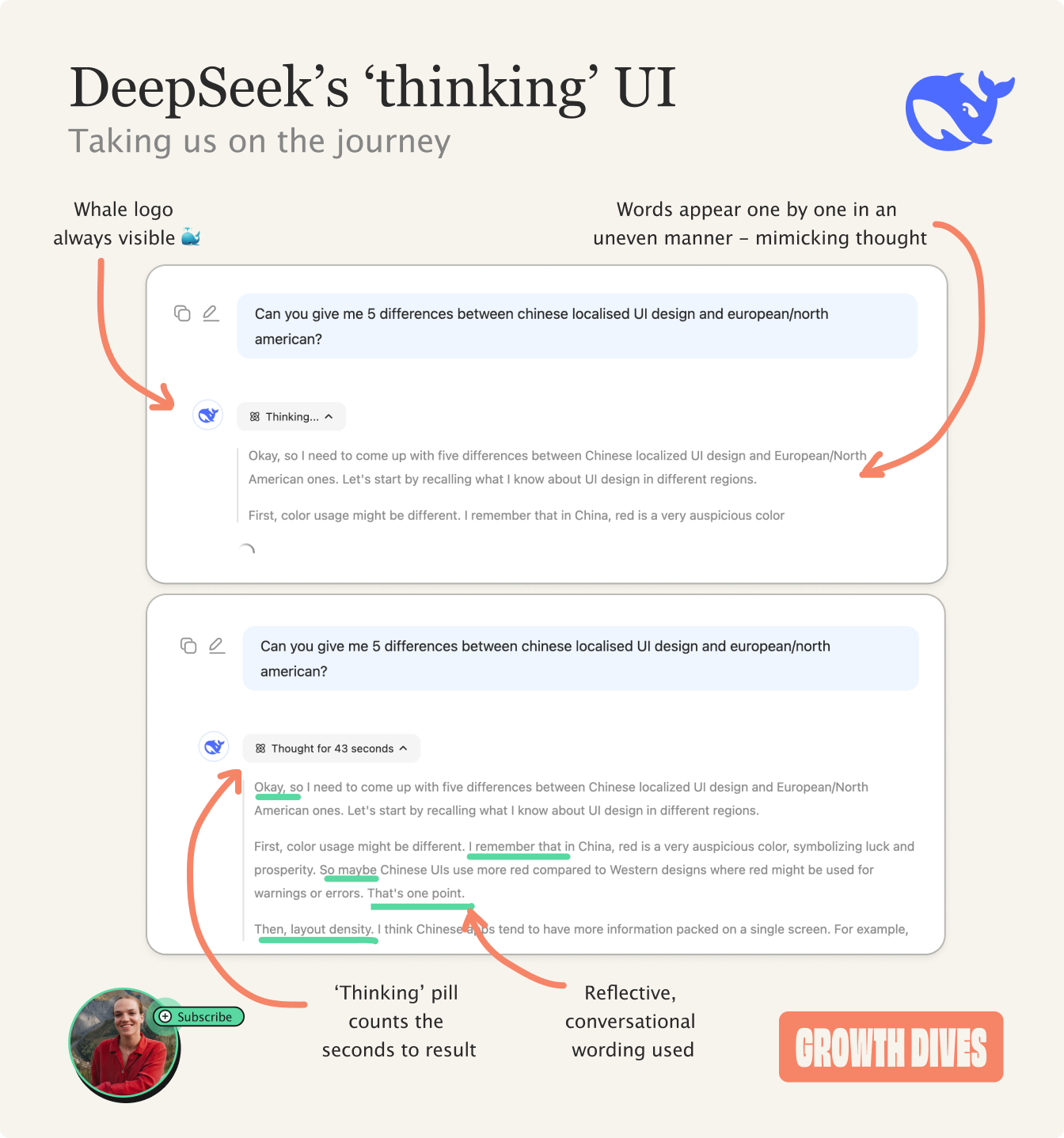Each week I reverse engineer the products of leading tech companies. Get one annotated teardown every Friday.
Growth Dives: Is this the new UX?
Is this the new UX?Goodbye buttons. Hello conversations. Read online here, or download as PDF Two weeks into my role at Fyxer AI and my world already feels flipped on its head, especially when it comes to designing product experiences. I’ve always thought of UX as the overall product experience: how it works, how it looks, and how it speaks to the person using it. The tangible parts of UX are things like:
There are also the intangible bits - compliance, architecture, background systems. In growth, we tweak and AB test these UX elements to improve the experience and hit business goals. But what if the levers you normally pull don't exist? What if you have far fewer things to play with? Enter 🥁🥁🥁 NLX: Natural Language UX. What is Natural Language UX (NLX)?NLX is the user experience of language-based AI products. It’s about how humans communicate with systems - via text, voice or other language interfaces - and how the system responds naturally, and usefully. I first heard the term from Aparna Chennapragada, Chief Product Officer (CPO) of experiences at Microsoft, on Lenny’s podcast:
In a traditional product, my levers were things like:
Most of the UX levers we’re used to either don’t exist or matter far less with AI products. The question now isn’t where to put a button but how to guide a conversation so it feels seamless, human and trustworthy. You’re shaping how the product understands someone’s words and how it responds back. Aparna Chennapragada put it well when talking about AI chatbots: It’s more much elastic — that doesn’t mean it’s not designed. Conversations also have grammars, structures, and UI elements that are invisible. So, one of the things I see that I’m really excited about are: what are the new principles, new constructs in natural language as an interface? So what does that mean in practice? We have new tools to play with ⚒️Some of the “new UX levers” in NLX include:
In short, NLX is about designing interaction as an interface, rather than static screens. I covered some of this in my analysis of DeepSeek a while back (but I hadn't a word for it back then), where it lent hard into ‘thinking’ UI - showing how much work is being done behind the scenes.
This is a nice example of the labour illusion effect 🧠 where users perceive experience as more valuable when they see the work that goes into them. At Fyxer AI, the challenge gets one level harder. The main product experience doesn’t live inside a web app or mobile app, instead it lives inside Gmail or Outlook 😱 When you sign up, Fyxer AI analyses the last few hundred emails in your inbox to learn your tone of voice and context about you.
It then decides what needs a response, and drafts email responses in your tone of voice. These draft responses are left in your 'To Respond' label (which it has sorted for you), in order for you to edit and send. Like a nice little to-do list.
The drafts are often uncanny and can be improved even more if you use the meeting notetaker in your calls, upload documents for added context or tell the AI about yourself in your settings. But, as you can see, from a product design perspective you may stumped as to what to change 😭 😭 And, as AI slips and slides into everyday tools, NLX will become the new space for designers - one where words, sentences and paragraphs are 90% of the user experience. Two weeks in, I’m realising that designing for NLX isn’t about screens and buttons... It reminds me of when I was training my dog. Our dog trainer told us that he's training us, not the dog. And that's almost what NLX has to do: train the user to use the product properly, to get the best outcomes from the AI. It’s much harder than traditional UX, but veeeeery exciting to crack. BUT there’s a few things that don’t change (and I don’t think they ever will). What stays the same? The human element 👯♀️Customer psychology doesn't change (on a macro level). Yes, users may be losing trust over time or there may be new mental models or market changes, but the psychological principles of safety, belonging, accomplishment, prestige, competition - these haven't changed. In terms of product, what's still true is:
NLX changes how we deliver those things, but not why they matter at a fundamental level. There may be more hurdles and less toys in the toy box, but isn’t that more fun? I'm excited as this is the learning curve I was talking about. My brain feels like it's going to explode. But I'm holding on to this thought: Designing for natural language is a different challenge but fundamentally it’s still about creating experiences people value. More of a thought piece today with a small bit of analysis sprinkled in. Let me know what ya think! See you next week, Rosie 🕺 |
Growth Dives
Each week I reverse engineer the products of leading tech companies. Get one annotated teardown every Friday.



